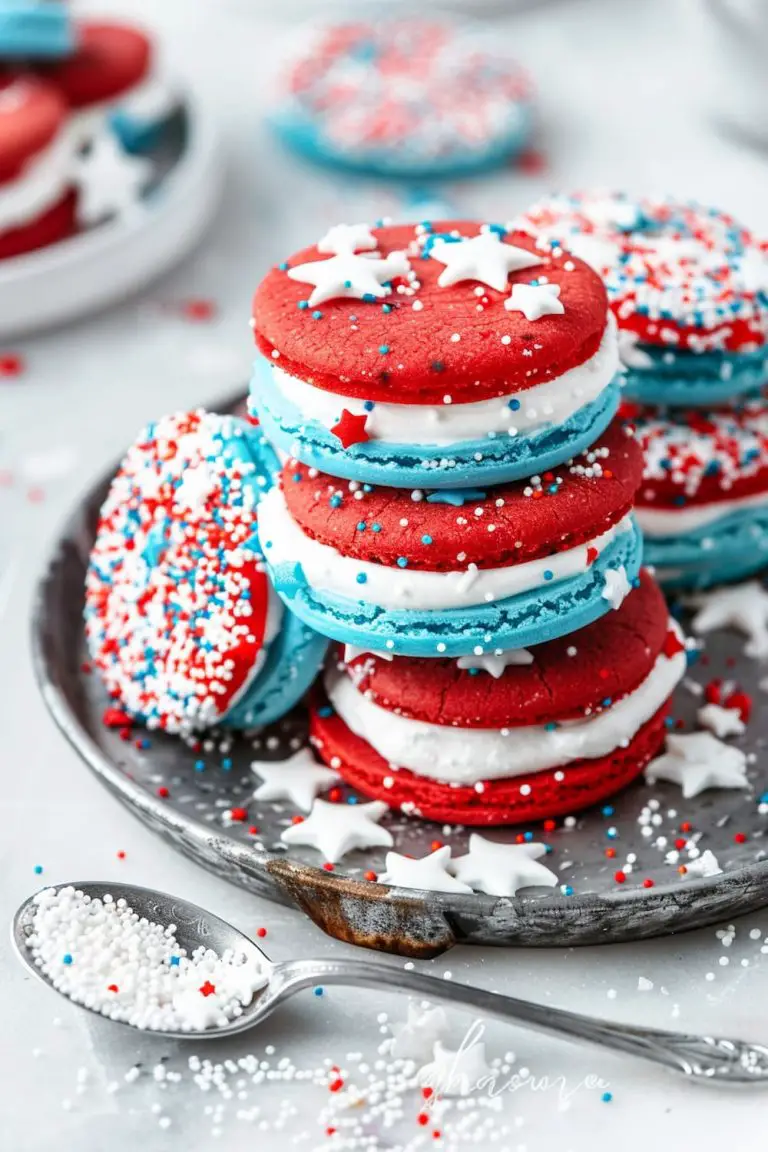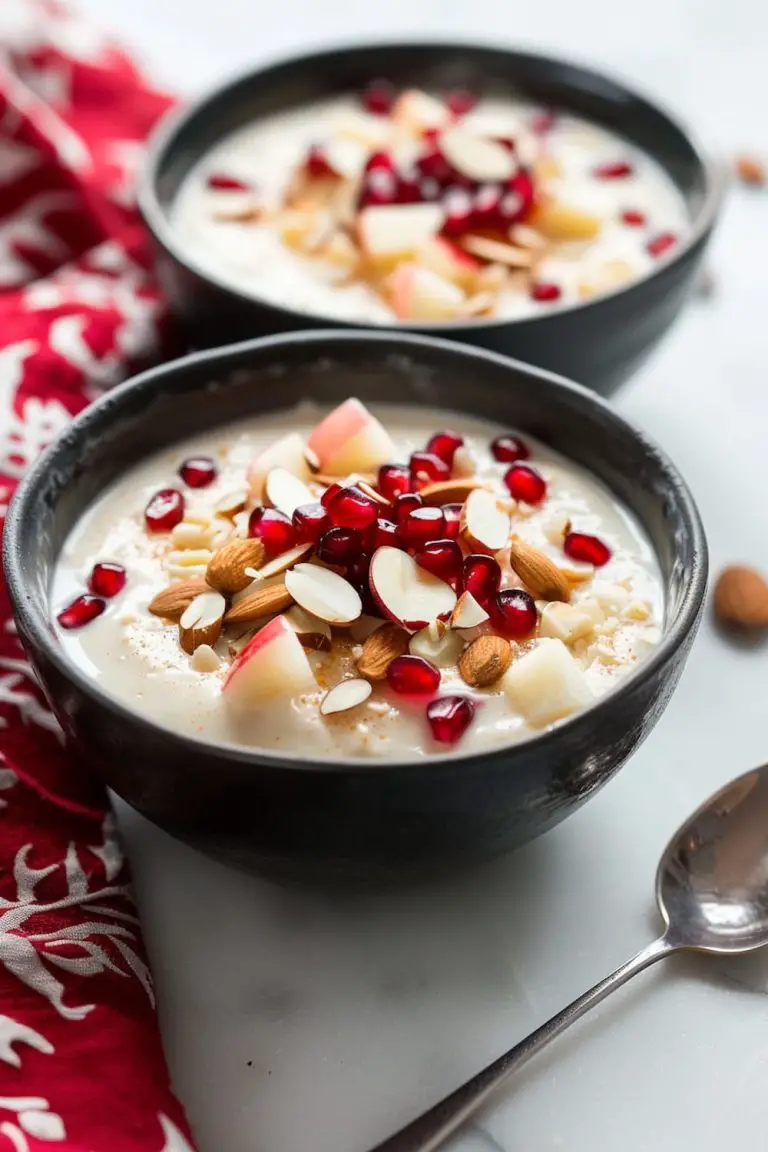Til Laddu Recipe ( Sesame Seeds ladoo)
![white til [seasome seeds] laddus served in a dish with cilantro leaves](https://tastycookingaroma.com/wp-content/uploads/2024/04/almostawake21_white_til_seasome_seeds_laddus_served_in_a_dish_ef2357d2-2f17-423f-a3f0-aef0137ffd01_0.jpg)
Did you know that these laddus are traditionally made during winter festivals in India, believed to provide warmth and energy during the colder months?
In just 20 minutes, and with wholesome ingredients, you can create an authentic Indian delight right in your kitchen.
Why You’ll Love This Recipe:
- Quick and Easy: Ready in 20 minutes, it’s perfect for last-minute sweet cravings.
- Health Benefits: Sesame seeds are a great source of calcium and healthy fats.
- Versatile: Easily customizable with nuts or spices for a personalized touch.
- Cultural Experience: Offers a taste of Indian festivals and traditions, bringing a piece of cultural richness to your kitchen.
In this guide, you’ll learn
- Some Interesting Facts and Origin Story of Til Laddu
- How to make Til Laddu in your kitchen
- Common Mistakes To Avoid, Pro Tips To Enhance The Taste Of the Dish
- FAQs (Reader Questions Answered) and much more stuff!
So, grab your apron, and let’s dive in!
Some Interesting Facts About Til Laddu
- The term “Til Laddu” in Hindi translates to “Sesame Seed Balls,” spotlighting the dish’s main component.
- While traditionally made with sesame seeds and jaggery, Til Laddu welcomes variations. You can easily adapt it to include crushed nuts, coconut flakes, or even a pinch of cardamom, making it a perfect fit for diverse tastes and dietary preferences.
Origins
- Til Laddu, a traditional Indian sweet, has roots that trace back to ancient times.
- Its origin can be linked to the practice of using sesame seeds (til) in rituals and offerings, a practice that dates back thousands of years, as mentioned in various scriptures.
Cultural Significance
- Til Laddu holds a place of prominence in Indian festivals, particularly in Makar Sankranti, a harvest festival celebrated across India to mark the sun’s shift into the northern hemisphere.
- Beyond Makar Sankranti, Til Laddu is also popular during other festivals like Lohri and Diwali.
- They are also consumed for their health benefits during the colder season, as sesame seeds are known for their ability to generate body heat and provide essential nutrients.
Regional Variations
- While the basic ingredients of Til Laddu remain consistent, in the north, they’re often made with jaggery, sometimes incorporating wheat flour and nuts for added texture.
- In the southern states, a version called “Ellu Urundai” includes coconut, and the sweetener may vary from jaggery to palm sugar, reflecting local tastes and ingredients.
Innovative Til (Sesame Seed) Laddu Recipe
Servings: Makes about 12 laddus (for 4 people)
Preparation Time: 10 minutes
Cooking Time: 15 minutes
Total Time: 25 minutes
Ingredients:
- 1 cup (150g) sesame seeds (white or black for variation)
- 1/2 cup (100g) granulated white sugar or brown sugar or jaggery (unrefined sugar)
- 1/4 cup (60ml) water
- 1/2 teaspoon ground cardamom
- 1/4 cup (30g) roasted peanuts, crushed (for a nut-free version, use roasted sunflower seeds)
- 1 tablespoon ghee (clarified butter) (for a vegan alternative, use coconut oil)
- Optional: 1 tablespoon desiccated coconut for rolling
Instructions:
Toast Sesame Seeds:
In a dry, non-stick pan over medium heat, toast the sesame seeds. Stir continuously for about 5 minutes or until they turn golden and start to pop. This process enhances their nutty flavor, making your laddus more aromatic.
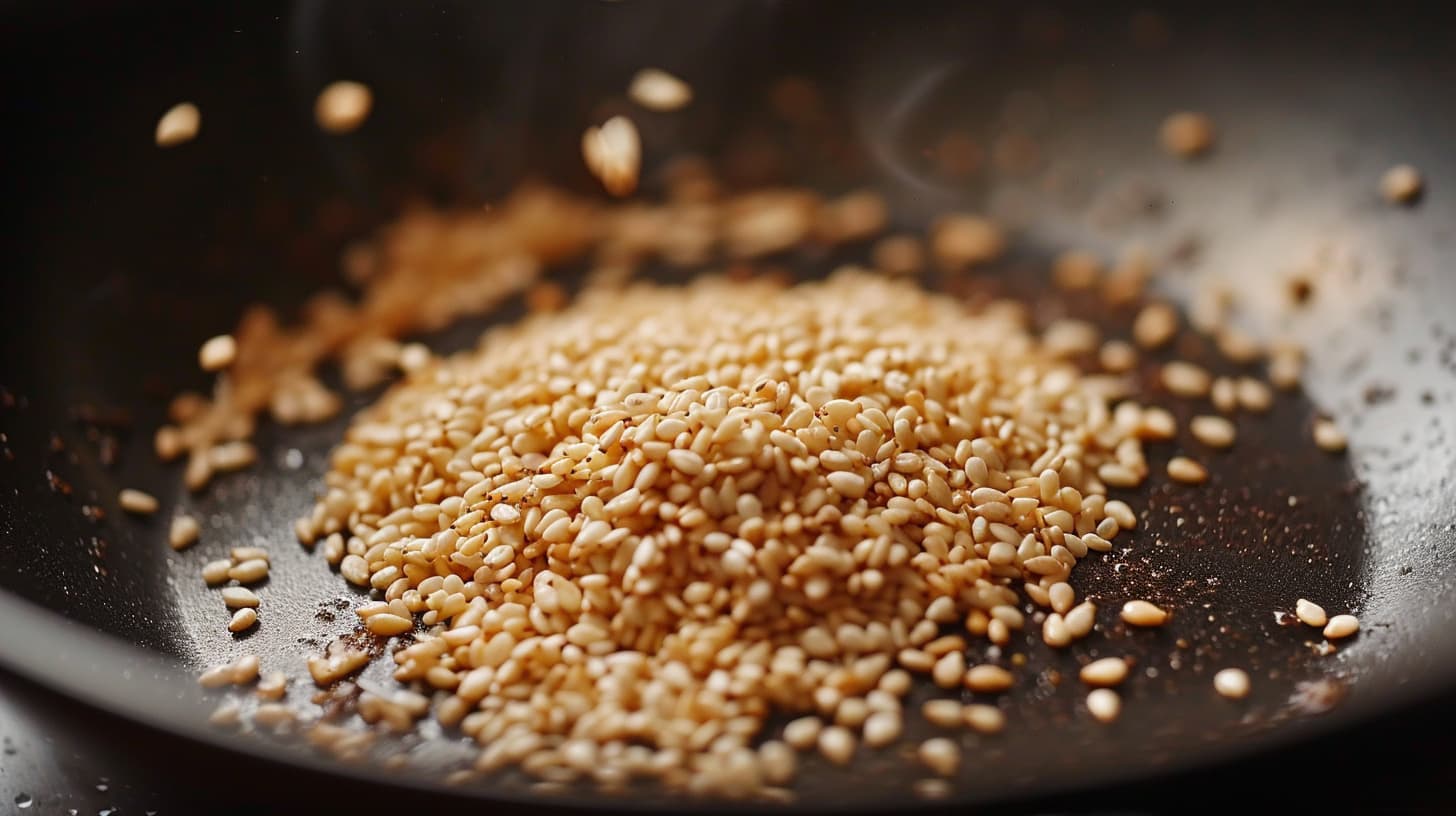
Keep a close eye during roasting as sesame seeds can quickly go from perfectly toasted to burnt. The key is constant stirring and a medium flame.
Transfer to a plate and let them cool.
Prepare Sugary Syrup:
In the same pan, add water and sugar (or jaggery or coconut sugar). Cook over low heat until the sugar dissolves completely.
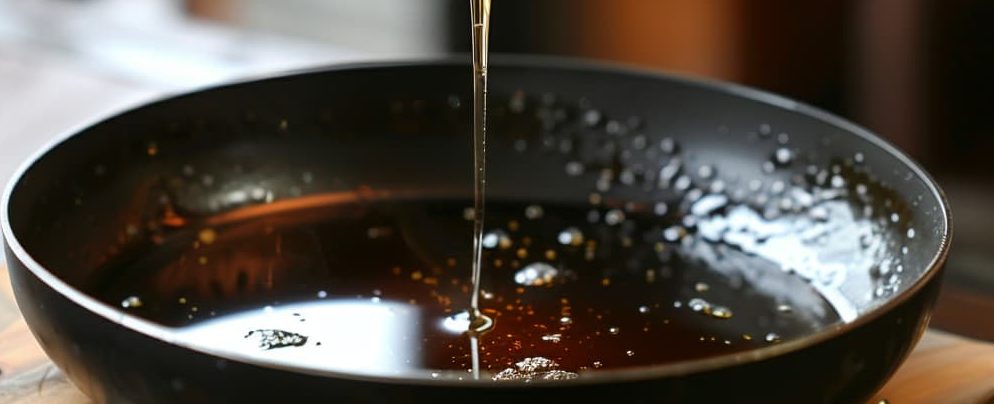
-
- Combine the sugar with 1/4 cup of water in the pan over low heat. Stir continuously until the sugar dissolves completely.
- Once dissolved, increase the heat to medium and bring the mixture to a boil. Let it simmer until it reaches a one-string consistency, rather than the softball stage.
- To test this, dip a spoon into the syrup, lift it, and let it cool for a few seconds. When you touch the syrup with a clean finger and then touch your thumb and finger together and pull them apart, the syrup should form a single thread.
Sugar does not need to reach the same temperature as jaggery to achieve the correct consistency for laddus. The one-string consistency is crucial as it ensures that the laddus will hold together without becoming too hard.
This syrup acts as a natural sweetener and binder for the laddus, giving them a delightful sweetness and chewy texture. Remember, the syrup should not color much; you’re looking for a thickened texture rather than a caramelized color.
P.S. Using sugar will result in laddus that are sweeter whereas using jaggery will impart moderate sweetness and a deep, molasses-like flavor. However, irrespective of what you use, they will still be delicious and retain the nutty essence of sesame seeds.
Mix Ingredients:
Reduce the heat to low and add the toasted sesame seeds, ground cardamom, and crushed peanuts (or sunflower seeds) to the syrup. Mix well until everything is evenly coated with the syrup.
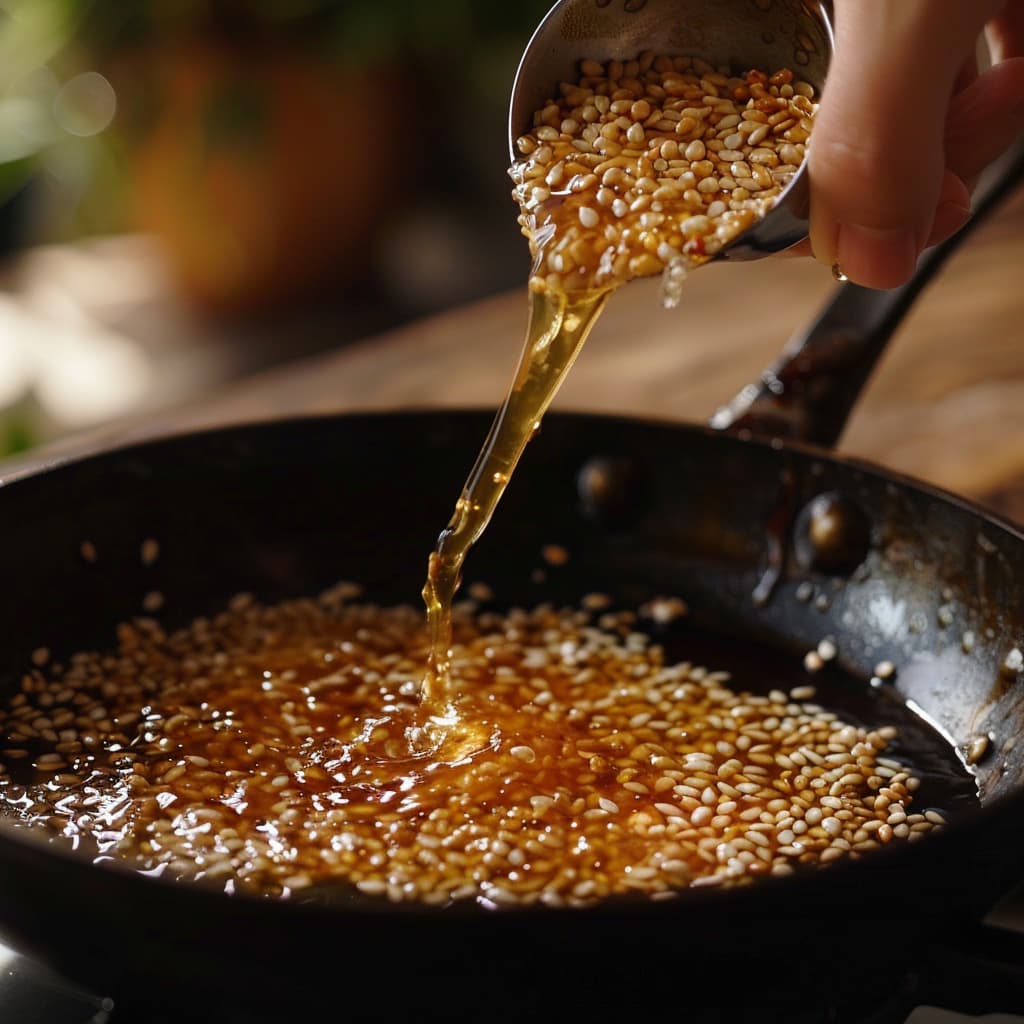
The addition of cardamom and peanuts not only introduces layers of flavor but also adds to the nutritional profile of your laddus.
Shape the Laddus:
Grease your palms with a little ghee (or coconut oil) to prevent sticking. While the mixture is still warm (but cool enough to handle), take small portions and roll them into balls. If the mixture cools down and hardens, making it difficult to shape, gently reheat it for a minute.
![Rolling warm white til [seasome seeds] laddus into balls](https://tastycookingaroma.com/wp-content/uploads/2024/04/almostawake21_Rolling_warm_white_til_seasome_seeds_laddus_int_7883b75c-5915-4ce1-be44-078bea8f292c_2.jpg)
Rolling laddus, while the mixture is warm, ensures they hold together well without crumbling.
Optional – Roll in Coconut and nuts:
- If desired, roll the formed laddus in desiccated coconut for an extra layer of texture and flavor. This step is optional but adds a delightful contrast and visual appeal to the laddus.
- The addition of crushed peanuts or sunflower seeds not only adds to the nutritional value but also introduces a pleasant crunch.
- Feel free to experiment with other nuts and seeds like almonds, cashews, or pumpkin seeds for different flavors and textures. Just ensure they’re finely chopped or crushed so the laddus can be easily shaped.
Cool, Serve and Store:
- Allow the laddus to cool completely before serving. They will firm up as they cool, developing the perfect texture.
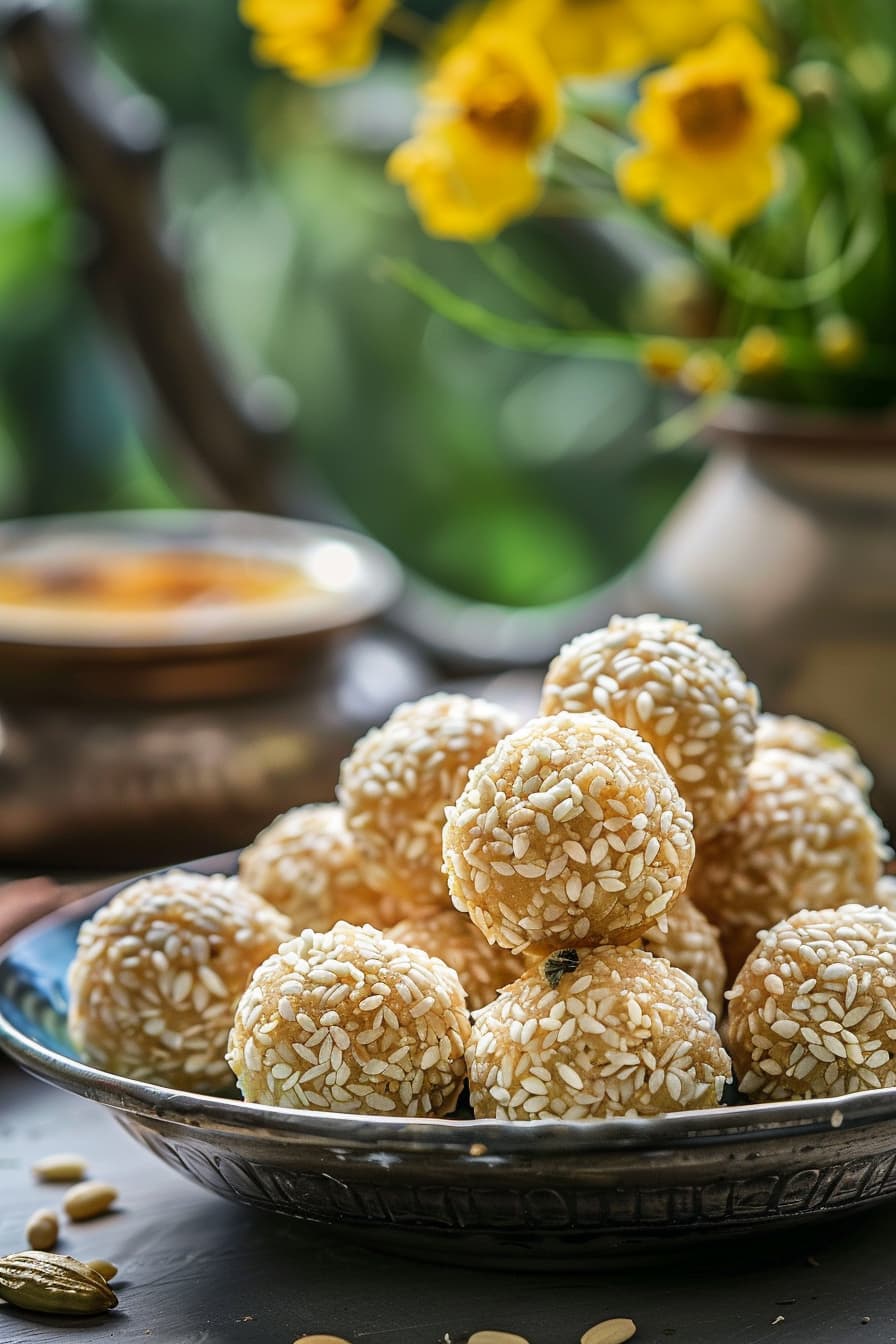
- Once the laddus have cooled and set, store them in an airtight container at room temperature. They typically last well for up to 2 weeks.
- If you live in a very hot or humid climate, you might prefer to store them in the refrigerator, although this can make them slightly harder. Just bring them to room temperature before serving to ensure they’re soft and enjoyable.
You can get a bit of brownish color of the laddus if you use jaggery or if you slightly overcook the syrup.
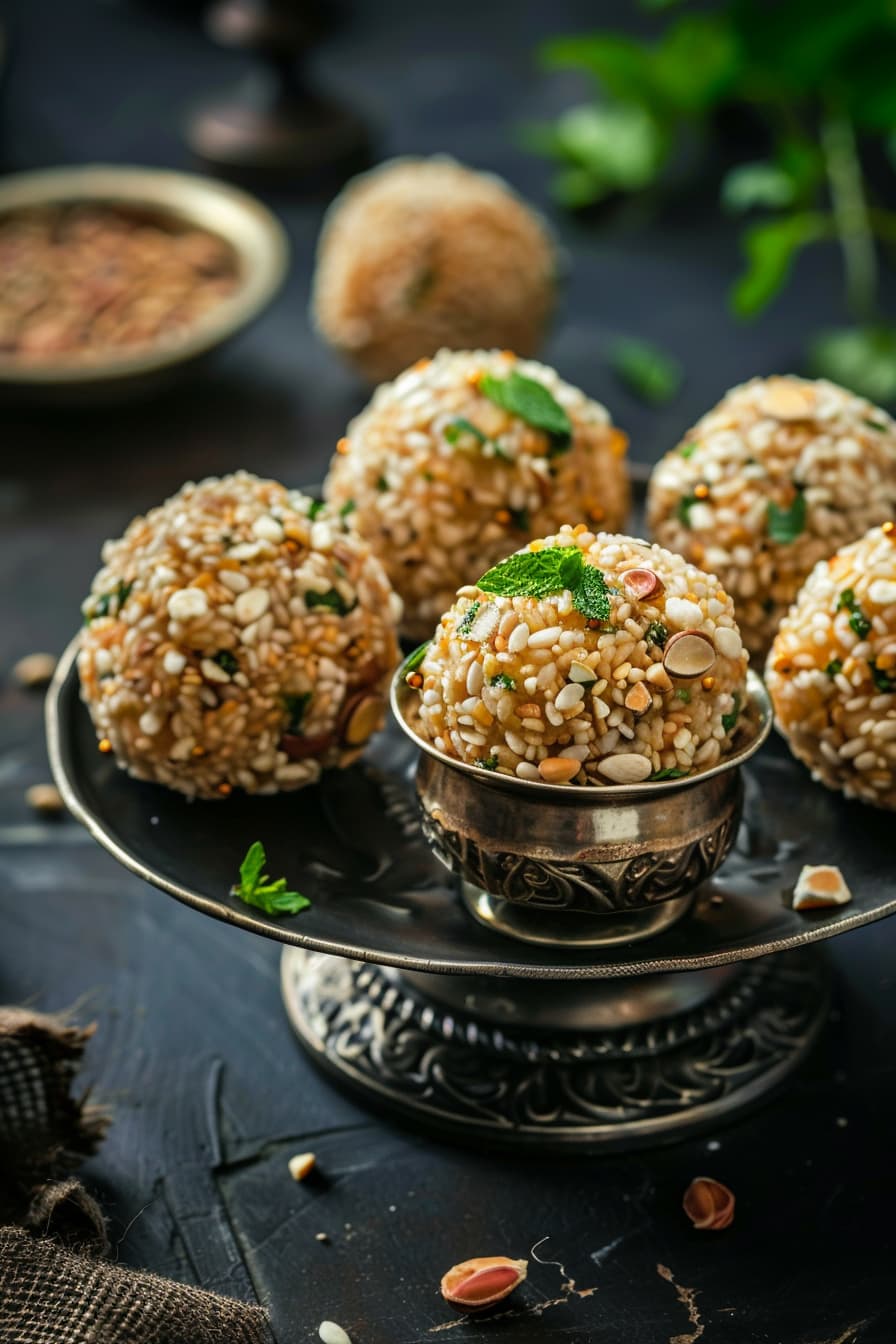
Mistakes To Avoid While Making Til Laddu
Ingredient Selection
- Quality of Sesame Seeds: Always use fresh sesame seeds. Stale seeds can ruin the taste. Opt for unhulled seeds for a more authentic flavor.
- Jaggery vs. Sugar: Jaggery is traditional and adds a unique flavor and health benefits not matched by refined sugar. Using poor-quality jaggery or substituting with refined sugar can significantly alter the taste. If you must substitute, consider using unrefined cane sugar or coconut sugar.
Preparation Pitfalls
- Roasting Sesame Seeds: Over or under-roasting sesame seeds is a common mistake. Perfectly roasted seeds should be golden and aromatic. Over-roasting can lead to a bitter taste, while under-roasting can result in a lack of flavor.
- Melting Jaggery: When melting jaggery, ensure it’s completely dissolved and filtered to remove impurities. Not doing so can result in a gritty texture in the final laddus.
Cooking Techniques
- Syrup Consistency: Achieving the right consistency of jaggery syrup is crucial. Too thin, and the laddus won’t hold shape; too thick, and they’ll be hard to bite into. Aim for a softball consistency—when a drop of syrup in cold water forms a soft ball.
- Mixing: Mix the roasted sesame seeds with the jaggery syrup thoroughly and quickly, as the mixture starts to harden as it cools. Delay in mixing can make shaping the laddus difficult.
Seasoning and Flavoring
- Balancing Flavors: The addition of cardamom or other spices should be balanced — too much can overwhelm the nutty flavor of sesame seeds, while too little might result in a bland taste. Start with a smaller amount and adjust according to taste.
Presentation Tips
- Size and Uniformity: Keeping the laddus uniform in size not only makes them more appealing but ensures consistent cooking and texture. Use a tablespoon or a small ice cream scoop to measure out the mixture before rolling.
Garnishing: A simple garnish can elevate the look of Til Laddu. Consider rolling the laddus in desiccated coconut or dusting it with powdered sugar for a decorative touch. However, remember not to overdo it, as the simplicity of Til Laddu is part of its charm.
Pairing Suggestions for Til Laddu
- With Beverages:
- Winter: Pair with a warm cup of masala chai or hot almond milk. The spices in the chai and the richness of almond milk complement the earthy tones of the laddus.
- Summer: Opt for a cold glass of mango lassi or a refreshing nimbu pani (lemonade). Their sweet and tart flavors provide a delightful contrast to the sweetness of Til Laddu.
- With Side Dishes or Main Courses:
- Til Laddu, being a dessert, rounds off a meal perfectly. Serve after a savory meal of vegetable biryani or paneer tikka for a well-rounded dining experience. The spicy and savory flavors of the main dishes make the sweet and nutty flavors of the laddus stand out even more.
Seasonal Variation for Til Laddu
- Winter: This is the traditional season for Til Laddu. To enhance its warmth-giving properties, consider adding ginger powder or a pinch of nutmeg to the recipe, offering extra warmth and a spice kick suitable for colder months.
- Spring: Incorporate edible flower petals, such as rose or lavender, into the mix for a fresh, floral note that complements the season’s new beginnings.
- Summer: Add grated coconut or coconut flakes to the laddus for a lighter, tropical twist. Coconut not only adds a refreshing flavor but also makes the laddus more suited to the summer palate.
- Fall: Mix in some pumpkin spice or cinnamon to the laddus. These spices add a cozy, comforting flavor that’s perfect for autumn’s cooler weather and festivities.
Always Keep In Mind, that the inclusion of newer veggies or spices can end up impacting the overall taste of the dish, so you may need to adjust your other spices or salt portions to counter that.
Common Problems You May Face While Cooking Til Laddu
Problem: Sesame Seeds Burnt During Roasting
Solution: Sesame seeds can burn quickly due to their high oil content. The key is to roast them over low to medium heat and keep stirring constantly. Once they start to pop and turn golden, immediately remove them from the pan to stop the cooking process. A heavy-bottomed pan distributes heat more evenly, reducing the chance of burning.
Problem: Jaggery Syrup Consistency Is Too Thick or Too Thin
Solution: Getting the right consistency for jaggery syrup can be tricky. If it’s too thick, your laddus might end up hard. If too thin, they won’t hold their shape. Use the cold water test: drop a little syrup into a bowl of cold water; it should form a soft ball that flattens when pressed between your fingers. If the syrup hardens too much, add a tablespoon of hot water and heat it slightly to adjust. If too thin, cook it a bit longer while constantly stirring.
Problem: Difficulty in Shaping the Laddus
Solution: If the mixture cools down too much, it becomes hard to shape. Keep the mixture warm (but not hot) to make shaping easier. Grease your palms with a bit of ghee or coconut oil to prevent sticking. If the mixture becomes too hard, gently reheat it until it’s pliable again.
Problem: Laddus Are Crumbling and Not Holding Shape
Solution: This usually happens if the jaggery syrup wasn’t at the right consistency or if the mixture wasn’t mixed well. Ensure that the syrup is at the soft ball stage before adding the sesame seeds. Mix thoroughly so that the sesame seeds are well coated with the syrup. Press firmly when shaping the laddus to ensure they bind together.
Problem: The Flavor Is Too Bland or Too Sweet
Solution: Taste your jaggery (or sugar) and sesame seeds before starting. Adjust the amount of jaggery according to your preference and the sweetness of the jaggery. Adding a pinch of salt can enhance the flavors and balance the sweetness. If you find the flavor bland, a bit more cardamom or a pinch of dry ginger powder can add depth and warmth to the laddus.
Problem: Laddus Are Too Hard After Cooling
Solution: This often results from cooking the jaggery syrup too long, making it too hard when it cools. Remember, you’re aiming for a softball consistency with the syrup. If your laddus turn out too hard, consider breaking them up and using them as a topping for yogurt or ice cream, then adjust the syrup cooking time in your next attempt.
Pro Tips for Perfecting Til Laddu
- Toast Sesame Seeds Evenly: Toasting sesame seeds evenly until they’re golden brown brings out their nutty flavor. Use a low to medium flame and constant stirring to prevent them from burning.
- Purity of Jaggery: Use high-quality, pure jaggery for the best flavor and health benefits. If the jaggery has impurities, melt it with a little water and strain before using.
- Right Consistency of Jaggery Syrup: Achieving the correct consistency of jaggery syrup is crucial. Perform the cold water test to ensure it’s ready. If you’re using a candy thermometer, the syrup should reach the softball stage (235-245°F or 112-118°C).
- Warm Hands for Shaping: If shaping the laddus is difficult due to the mixture hardening, wash your hands with warm water and dry them before shaping. The warmth makes it easier to handle the mixture.
- Presentation: For an elegant presentation, roll the laddus in a mixture of powdered sugar and cardamom or lightly toasted sesame seeds. This not only adds to the taste but also makes them more visually appealing.
FAQs about Til Laddu (Reader Questions Answered)
Q: Can I make Til Laddu vegan?
A: Yes, Til Laddu is naturally vegan if you ensure that the jaggery used is vegan (some jaggery is processed with non-vegan methods). If you’re using any fat like ghee for shaping, opt for a plant-based oil instead.
Q: My laddus are falling apart. What did I do wrong?
A: This usually happens if the jaggery syrup wasn’t at the right consistency. Ensure it reaches the soft ball stage before adding the sesame seeds. Also, press firmly when shaping the laddus.
Q: Can I add other ingredients to Til Laddu?
A: Absolutely! Feel free to add crushed nuts, dried fruits, or even spices like ginger powder for additional flavor and texture. Just ensure the additional ingredients are finely chopped so the laddus can hold their shape.
Q: The jaggery syrup crystallized while I was making the laddus. How can I prevent this?
A: Crystallization can occur if the syrup is overcooked or if sugar crystals form on the side of the pan and fall into the syrup. To prevent this, do not stir the syrup once it starts boiling, and use a pastry brush dipped in water to dissolve any crystals on the side of the pan.
The mixture becomes too hard to shape into laddus. What can I do?
Gently heat the mixture on low heat for a few seconds to soften it. Alternatively, add a teaspoon of warm water to make it pliable.
Can I make Til Laddu without using any oil or ghee for shaping?
Wet your hands with water to prevent sticking. This method also cools the mixture slightly, making it easier to handle.
Closing Thoughts
I’m genuinely excited to hear about your experiences with making Til Laddu. Did you add a personal twist? How did your culinary adventure turn out?
Please feel free to share your thoughts, variations, or any queries in the comments below. Happy cooking, and may your meals be filled with joy and deliciousness.
![white til [seasome seeds] laddus served in a dish with cilantro leaves](https://tastycookingaroma.com/wp-content/uploads/2024/04/almostawake21_white_til_seasome_seeds_laddus_served_in_a_dish_ef2357d2-2f17-423f-a3f0-aef0137ffd01_0-500x500.jpg)
Til Laddu Recipe ( Sesame Seeds ladoo)
Ingredients
- 1 cup 150g sesame seeds (white or black for variation)
- 1/2 cup 100g granulated white sugar or brown sugar or jaggery (unrefined sugar)
- 1/4 cup 60ml water
- 1/2 teaspoon ground cardamom
- 1/4 cup 30g roasted peanuts, crushed (for a nut-free version, use roasted sunflower seeds)
- 1 tablespoon ghee clarified butter (for a vegan alternative, use coconut oil)
- Optional: 1 tablespoon desiccated coconut for rolling
Instructions
Toast Sesame Seeds:
- In a dry, non-stick pan over medium heat, toast the sesame seeds. Stir continuously for about 5 minutes or until they turn golden and start to pop. This process enhances their nutty flavor, making your laddus more aromatic.
- Keep a close eye during roasting as sesame seeds can quickly go from perfectly toasted to burnt. The key is constant stirring and a medium flame.
- Transfer to a plate and let them cool.
Prepare Sugary Syrup:
- In the same pan, add water and sugar (or jaggery or coconut sugar). Cook over low heat until the sugar dissolves completely.
- Combine the sugar with 1/4 cup of water in the pan over low heat. Stir continuously until the sugar dissolves completely.
- Once dissolved, increase the heat to medium and bring the mixture to a boil. Let it simmer until it reaches a one-string consistency, rather than the softball stage.
- To test this, dip a spoon into the syrup, lift it, and let it cool for a few seconds. When you touch the syrup with a clean finger and then touch your thumb and finger together and pull them apart, the syrup should form a single thread.
- Sugar does not need to reach the same temperature as jaggery to achieve the correct consistency for laddus. The one-string consistency is crucial as it ensures that the laddus will hold together without becoming too hard.
- This syrup acts as a natural sweetener and binder for the laddus, giving them a delightful sweetness and chewy texture. Remember, the syrup should not color much; you're looking for a thickened texture rather than a caramelized color.
- P.S. Using sugar will result in laddus that are sweeter whereas using jaggery will impart moderate sweetness and a deep, molasses-like flavor. However, irrespective of what you use, they will still be delicious and retain the nutty essence of sesame seeds.
Mix Ingredients:
- Reduce the heat to low and add the toasted sesame seeds, ground cardamom, and crushed peanuts (or sunflower seeds) to the syrup. Mix well until everything is evenly coated with the syrup.
- The addition of cardamom and peanuts not only introduces layers of flavor but also adds to the nutritional profile of your laddus.
Shape the Laddus:
- Grease your palms with a little ghee (or coconut oil) to prevent sticking. While the mixture is still warm (but cool enough to handle), take small portions and roll them into balls. If the mixture cools down and hardens, making it difficult to shape, gently reheat it for a minute.
- Rolling laddus, while the mixture is warm, ensures they hold together well without crumbling.
Optional - Roll in Coconut and nuts:
- If desired, roll the formed laddus in desiccated coconut for an extra layer of texture and flavor. This step is optional but adds a delightful contrast and visual appeal to the laddus.
- The addition of crushed peanuts or sunflower seeds not only adds to the nutritional value but also introduces a pleasant crunch.
- Feel free to experiment with other nuts and seeds like almonds, cashews, or pumpkin seeds for different flavors and textures. Just ensure they're finely chopped or crushed so the laddus can be easily shaped.
Cool, Serve and Store:
- Allow the laddus to cool completely before serving. They will firm up as they cool, developing the perfect texture.
- Once the laddus have cooled and set, store them in an airtight container at room temperature. They typically last well for up to 2 weeks.
- If you live in a very hot or humid climate, you might prefer to store them in the refrigerator, although this can make them slightly harder. Just bring them to room temperature before serving to ensure they're soft and enjoyable.
- You can get a bit of brownish color of the laddus if you use jaggery or if you slightly overcook the syrup.

